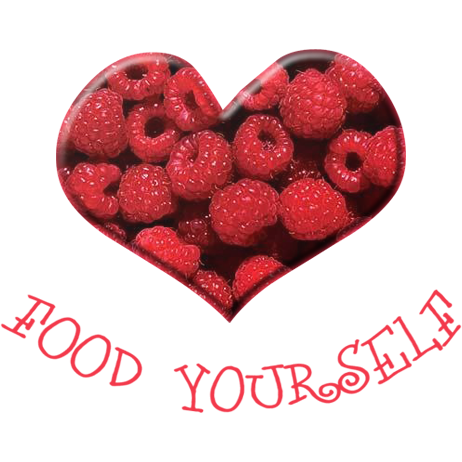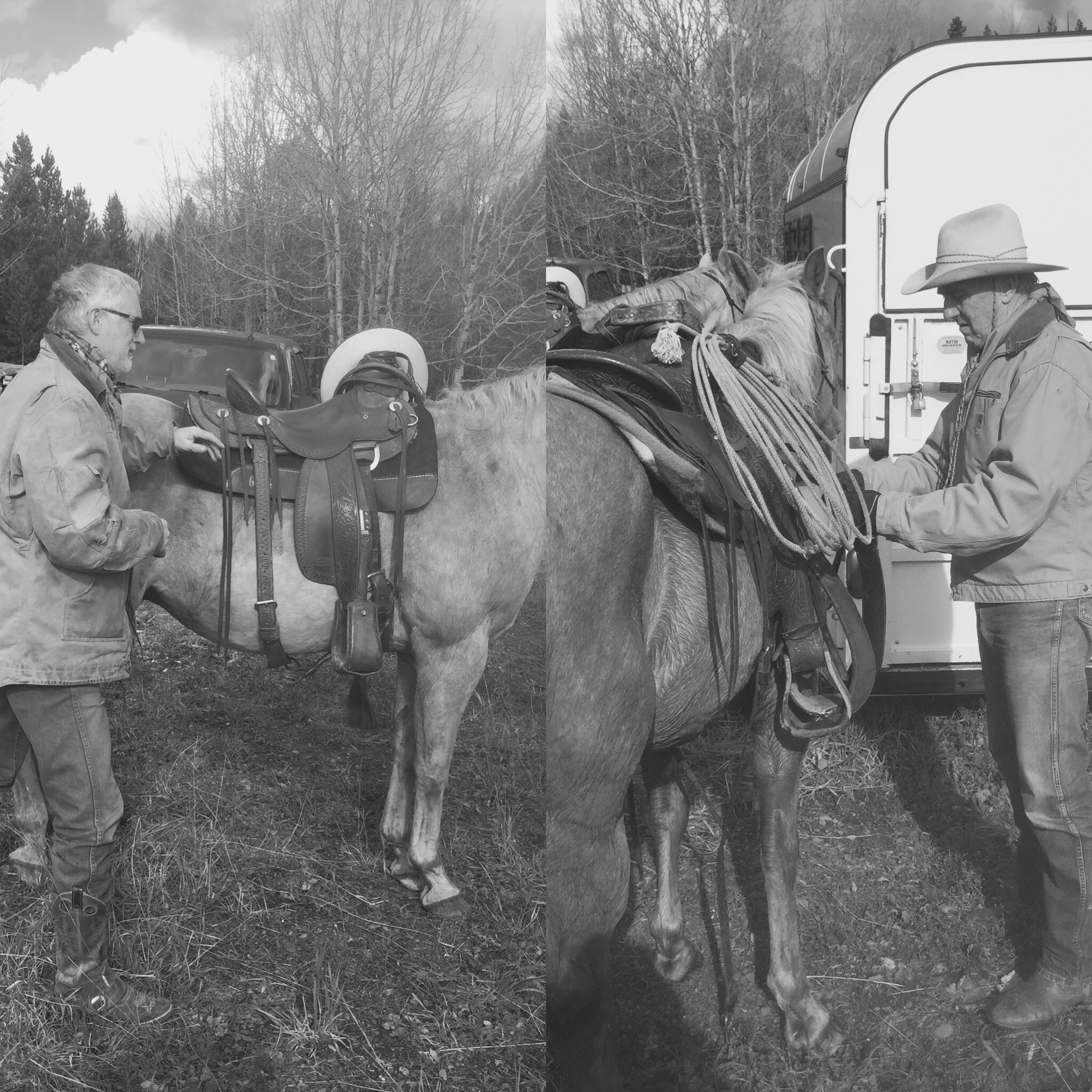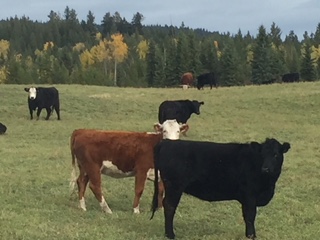The Grass IS Greener at XY Ranch
On a chance encounter, I was e-introduced to Julie Covey, one of the owners of Double G Cattle Company, the company behind XY Ranch in 150 Mile House/Caribou region in British Columbia. This Ranch is doing everything right! I was so inspired and touched by their story and mission that I needed to share it with you. Take this for their mission statement: to naturally and humanely raise a true grass fed to grass finished cow using ZERO grains, antibiotics, or growth hormones. As consumers, we need to step it up and support local farmers to send our message that animal husbandry standards and sustainability matter. Let your wallet do the talking - every purchase counts! Now sit back and relax and enjoy my interview with one of the G’s in Double G Cattle Company - Graham Covey.
1. Tell me the story behind your ranch, how did you get started in this business and what keeps you excited about this work
Twenty-plus years ago I taught school with a young man named Gary. We found out we had similar interests and soon became good friends. We taught at the same school for 6 years or so then moved on to teach in our area of specialty. As the years moved on Gary would often find himself over at our farm riding horses and hashing out many of life's problems together. I ran an after school program two days a week for kids that loved to ride horses throughout the winter months. I got Gary to come along and ride. He soon owned a horse, a trailer and truck. It's wasn't long before he to wanted to become a farmer.
When Gary retired from his job as the district coordinator for special education he and his partner sold their house and looked for a place to start a farm. With the land prices close to the coast being so expensive they looked up country in the Cariboo. Their goal was an off-grid home. 150 Mile House was the best choice, and that’s where the story truly begins. Next came the animals and the chance to start a farm from scratch. We had a desire to produce cattle that were free to roam and could take as long as they needed to reach a good weight. We decided to buy and cross breed Hereford and Black Angus as we thought they had the best chance to thrive in the weather extremes of the Cariboo. We needed to purchase several of each breed to keep the cross as pure as possible. We only kept some of the original crosses. We sold off the double crosses as this waters down the genetic characteristics we desire. The crossbred animals are called black baldies. They have a black body with white facial markings. This has turned out to be a great choice for ease of calving and good mothers.
The best part of the year is calving season. It's exciting to see new calves born and to watch them grow. The other exciting part of our job is having people purchase our final product and then hear from them about how good it tastes. The consistency of product we produce is also key to the customer and that all goes back to our breeding program.
A good momma cow is one that calves easy and has no problems. She is also one that takes care of her calf and licks it off right away when it's born and can provide it lots of milk. These attributes are key as we aren't with these cattle everyday. Although we check on them weekly, they live on the range during summer months and must take care of themselves and their young.
2. I would love to hear more about your values, beliefs, and passions regarding animal husbandry standards.
One thing we always ask ourselves while handling cattle is, "what's best for the cow?" My view on keeping any animal is that we are truly charged with their care; like my own children Jenelle and Michael. We took care of their needs for food, water and safety for years. Similarly, cattle have daily food and water needs as well as the desire to be able to walk around freely from pressures like confined spaces or being chased. We have worked hard to keep the cattle free of these pressures.
For example, when we handle them once a year to replace tags on animals or de-lice them we use a cattle squeeze. Like all cattle farmers this device calms them down when they’re confined. This keeps them under control and protects us from getting hurt.
Our use of horses is another good example of planning and working with the animals with this goal in mind. We found that walking up to the animals on a horse it’s far less stressful than quads or on foot. We have very few sick animals and I believe the stress-free environment we provide is a great contributor.
There are new ideas and standards developing every year in animal husbandry that we keep informed about and implement. Such programs as the government tagging system that tells the origin of every animal born. These are scannable tags that we use to record birth dates and keep breeding records with. It's a bit of a pain sometimes but a very good program for tracking. I think the cattle industry is just coming into its own now with all the new technology and equipment available, it truly is a great time to be a farmer.
3. Tell me about the day and life of one of your animals?
With the four distinct seasons the Cariboo provides each has its challenges. When a calf is born the life cycle of that animal starts. Spring is end of March and it's snow and mud. Calves are born by the house so we can keep an eye on them. After calving, the new mothers and their babies are moved to a separate pen. It's lots of fun to watch them run around and kick in the air together. They stay in that small area for a week to make sure both mama and baby are doing well. Then they are moved to a much larger area on the hill to walk around and lie in the sun. When the end of May comes we let them out on the range for the summer. Here they can walk around all day and eat the natural grasses of the forest. Trees are everywhere, and water is found in the small lakes and marshes; Its a good life. It's also this time of year that bulls are added to the herd and breeding takes place.
During mid October, as the days get shorter, the first frosts come. This is when the range grass dies, and the cows start to make there way home. We don't usually have to go into the woods to find them as they wander back home to find our field gates open and fresh hay in the feeders. There is always one bull or cow that thinks the grass is greener at the neighbor’s place and goes missing. So we just call around to the neighboring ranches and tell them the number of the animal and its color and they get a trailer ride home.
Fall and winter start off slow and we change their feed to field hay in the form of big round bales. The cows get a smaller 60-acre area to wander with daily walks to the river for water then back up to the hay. This goes on all winter until the -40 C arctic cold takes hold. The breed of cow we chose now makes a big difference when winter sets in. The thick skin and long hair of the Hereford and the black baldies and Black Angus keep the animal warm during these days. The sun is up for four hours a day and the nights are long and dark. We break the ice on the river to keep the water from freezing and the underground springs slow to a trickle. That temperature only last for a few days then it goes back to a nice -10 C. The winter lasts around six months then it's time to calf again. As the days get longer and the snow turns to mud and the cycle continues.
4. Thinking about the future, what keeps you up at night? What are your concerns?
I believe the trend of clean eating and using animals that are treated humanely and not given hormones and drugs is a more than just a trend, it shows where the general public’s awareness is at. We truly live in the information age, where people want to know where there food is coming from and how it was grown and treated. People have the right to hear that story and make an informed decision of their food source. People really need to check things out as we now have all the information at our fingertips.
My biggest concern is that people continue to seek out the high quality and taste of products produced on small farms as opposed to the big meat factory feedlots that mass produce meat at all cost. The fade these days seems to be clean eating. I hope that the consumer checks out where their meat comes from and can see what they are getting, how they animals are treated not just look at the words on a sticker that says "grass fed" check out that it's true. We really do care about our animals and we hope people can see and taste the difference.
5. Is there anything else we should know about your ranch? What makes you guys different?
We chose where we ranch so that we are away from people and man-made stresses. We have tried to make things simple and as natural as possible. We aren't the only farmers that care for the animals or land and we’re well aware of it, but people need to see and hear what's going on with there food source.
Thanks Graham!
Now it’s your turn! If you are a meat eater, support local farmers like Gary and Graham on XY Ranch. This will send a message to the less humane farmers that their tactics and farming techniques will not fly anymore! As a consumer, your voice is where you put your money, so scream loud! Every voice counts.
If you enjoyed this post please click like, share it with family & friends or sign up to our newsletter to receive news and updates from Food Yourself.




